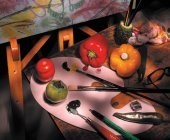|
Weight of Lens and its FinishingIt sounds odd but weight of lens is one important factor, which can tell us about its quality and durability. A good, well finished design, with metal lens barrel makes the lens expensive. It works smoothly for years. Metal parts provide good base and support to internal lens elements, especially, if some of them are floating elements. This firm foundation is a must for the lens to take punishments while we are travelling for an outdoor photo session. However, weight of lens is increased because of these metal components. Though this is not an issue, especially when the camera is mounted on a tripod, but some photographers do consider this factor in account, for hand held shoot.
Secondly, when we are traveling, then also weight of lens is to be considered. Otherwise, a heavy lens should be the first choice. There are some good lenses, which has some of its parts, made from plastic, which makes the lens lighter in weight as compared to a lens with metal parts. If you are going for a brand new one, then there is no problem, but always use it carefully. Protect it from sudden impacts and thermal shock.
Overall finishing of a good lens is always perfect from corner to corner. Check the filter mounting threads. It must be in good shape and should take the filter without any fuss. Check it for the focusing mechanism, which should move smoothly. If the lens has auto focus and manual focus mode, then the focusing ring is designed to move freely, so that there is less load on electrical motor, which is working while on auto mode. Some lens has very loose ring, which can accidentally shift, when you are focusing on manual mode. A good lens has internal movements, (driven by the electric motor) which are very smooth and free, but manual focusing ring has a clutch force, which makes manual focusing slightly tight, thus eliminating any chance of accidental shift. Always have a good look for any dent, when you are buying a lens. A used lens may have some scratches on body, which is the result of use, but a dent shows that the lens (or the camera) has been dropped.
Read about this: Aperture of lens: What we should check in aperture setting of a camera lens Focusing mechanism of a lens: Different type of focusing mechanism of a camera lens Lens faults: Various types of faults a lens can have, and how to check it Other information on the lens: Indication and information given on a lens barrel Range of focal length: Range of zoom lens in terms of focal length
Sharpness of lens: Resolution and lens contrast - how to test it Zoom ring: Ring on a lens barrel for zoom and focusing
Return back to how to test lens from this page - weight of lens
|






